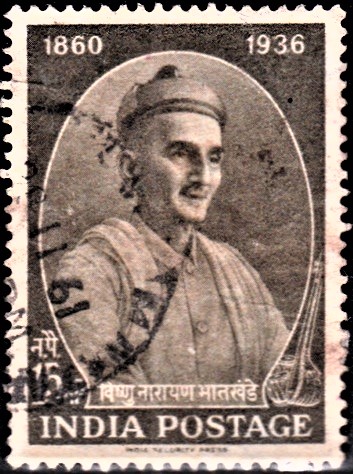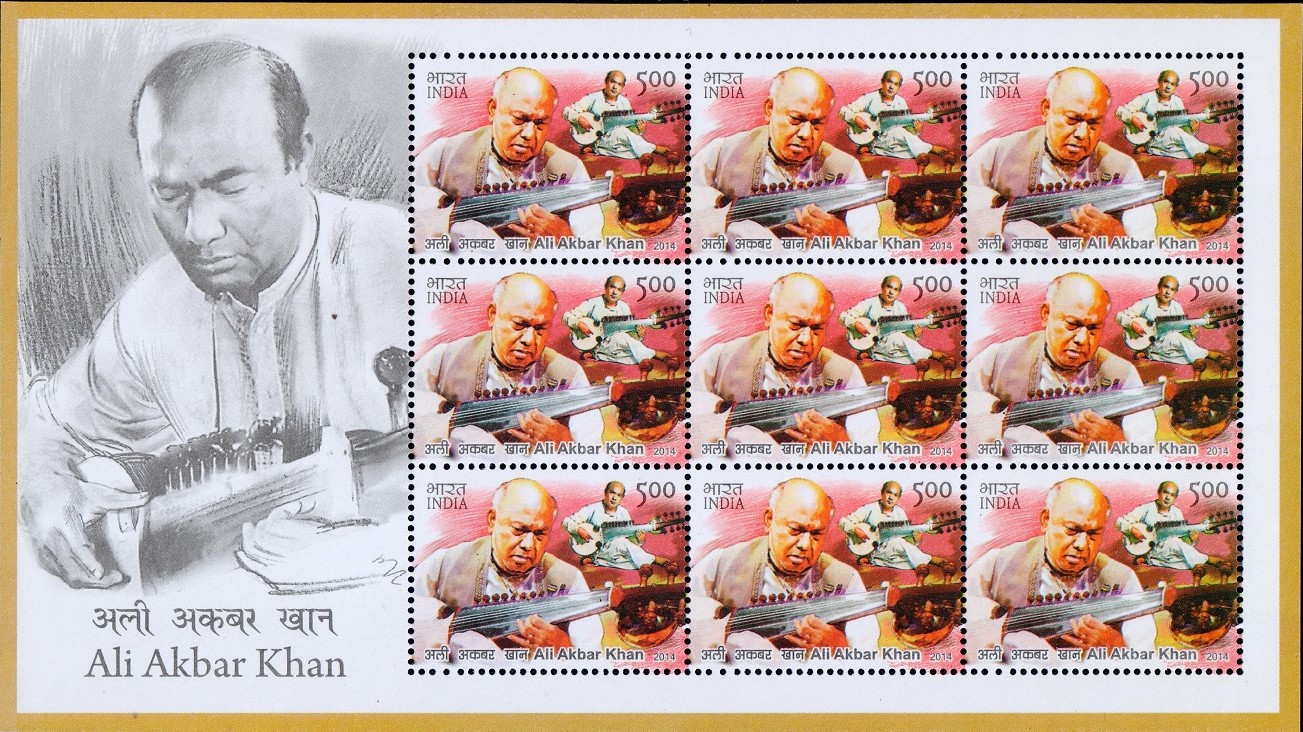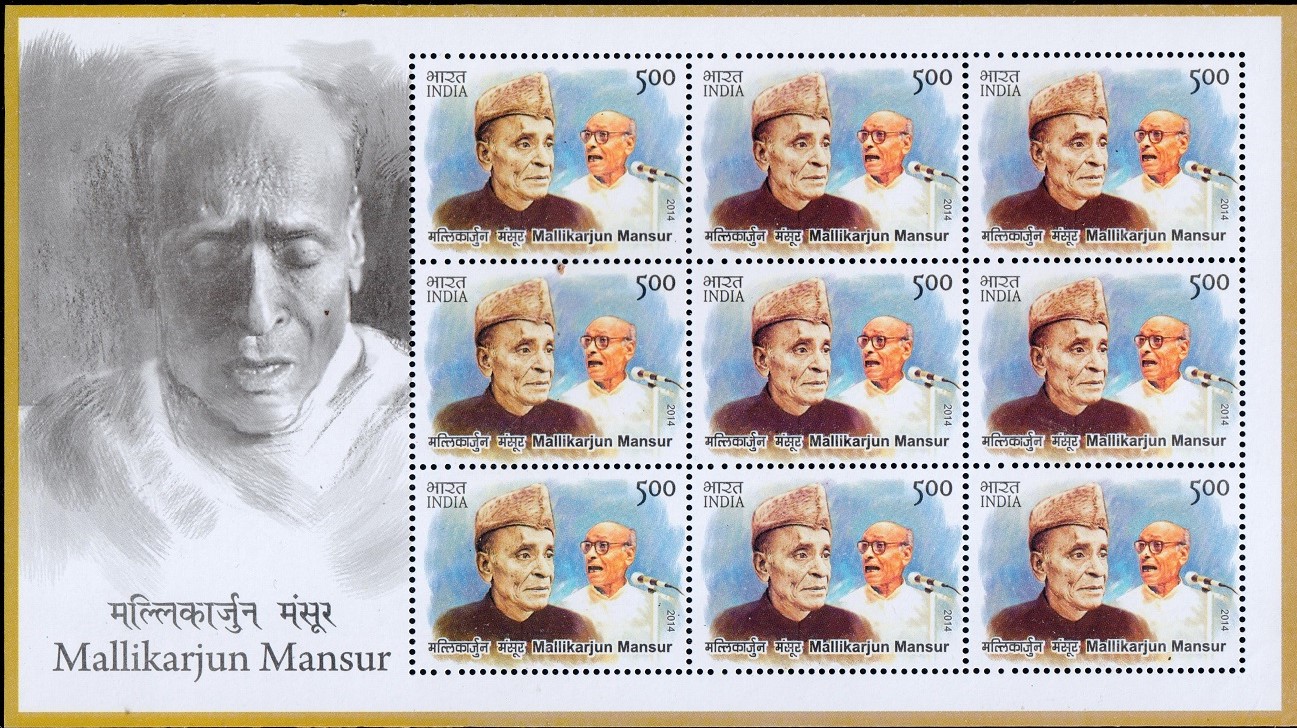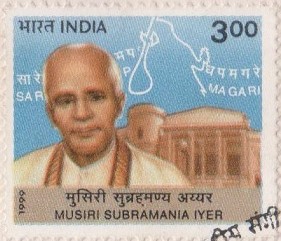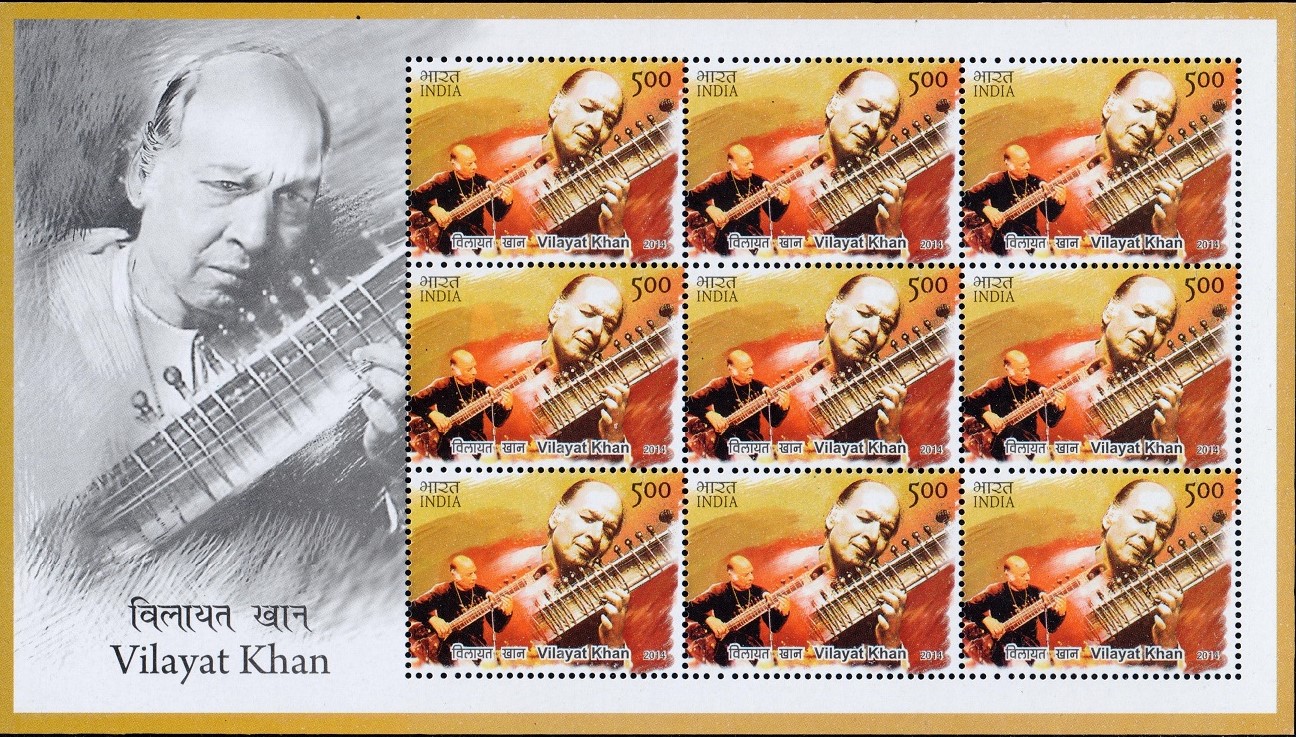
Ustad Allauddin Khan Saheb
A commemorative postage stamp on Baba Allauddin Khan, an Indian sarod player [a part of the series ‘Modern Masters of Indian Classical Music‘] :

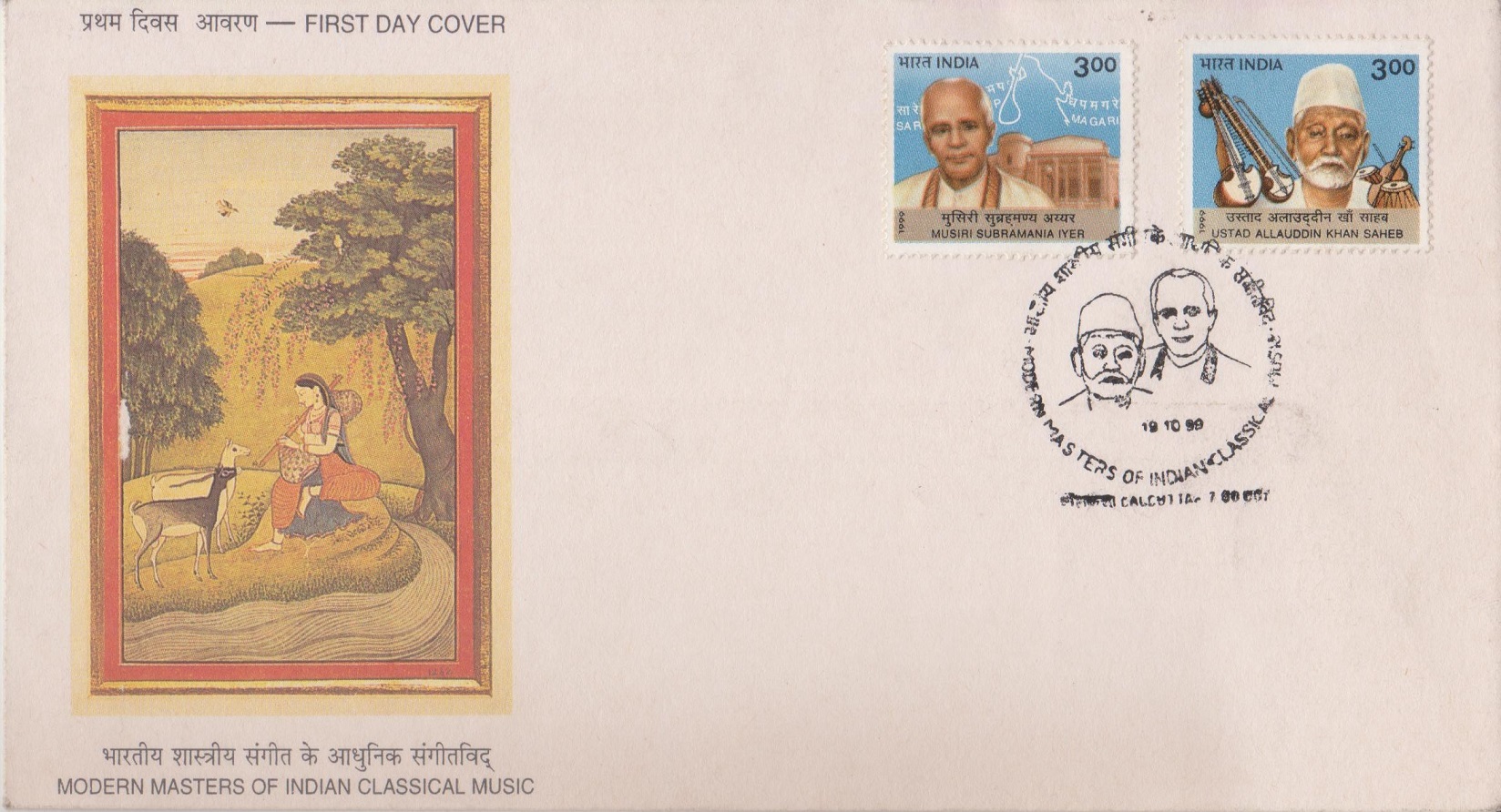 Issued by India
Issued by India
Issued on Oct 19, 1999
Issued for : Indian Music has a long unbroken continuously evolving tradition back to the period of the Vedas. Development of music commenced with the folk idiom, evolved in consonance with regional ingenuity and slowly grew into classical forms. Differing from region to region, there is an underlying unity in Indian classical music. There are two systems of music in India, the Carnatic and the Hindustani, which are highly dramatised. These are supplemented by folk music, bhajans and kirtans. The Department of Posts pays tribute to this ‘Unity in Diversity’ in Indian music through issue of a set of commemorative stamps on two masters of classical music of the modern era, one from the Carnatic School and the other, Hindustani.
Design : The F.D.C. depicts a Ragmala painting, “Gujari“.
Credits :
Stamp : ISP, Nashik based on a design by R.N. Pasricha
FDC : National Museum
Cancellation : Alka Sharma
Type : First Day Cover
Colour : Multi Colour
Denomination : 300 Paise
Overall size : 3.34 x 2.88 Cms.
Printing size : 2.99 x 2.53 Cms.
Perforation : 13 x 13
Paper : Imported unwatermarked Adhesive Gravure Coated Stamp Paper in Sheets 50.8 x 53.5 cms.
Stamps Printed : 0.4 Million
Number per issue sheet : 35
Printing Process : Photogravure
Printer : India Security Press, Nashik
Name : Allauddin Khan
Born on 1862 at Shibpur, Nabinagar, Brahmanbaria, Bengal Presidency, British India [now in Nabinagar Upazila, Bangladesh]
Died on Sep 6, 1972 at Maihar, Satna district, Madhya Pradesh, India
About :
- Ustad Allauddin Khan Saheb (1870-1972) was one of the greatest Sarod players of all time. Although “Sarod” was his forte all through his long and distinguished career, he also played fairly proficiently on no fewer than 18 musical instruments, and sang and taught vocal music, specialising in Dhrupad and Hori, with equal ease. His style was that of ‘Senia’ gharana, the School of Music associated with Tansen. He was a staunch traditionalist in the field of classical music, his command over the instrument was so immense and his melodies so deep, he often held his audiences spellbound for hours together. He was one of the pioneers who introduced the notation system in Hindustani music, and perhaps he was the first Indian musician to capture the imagination of western audience when he accompanied Uday Shankar’s dance troupe on the cultural tour of Europe in 1935. He was a teacher and a mentor of a number of distinguished musicians. In recognition of his services to the cause of classical music, he was one of the first four musicians of the country who were awarded the Padma Vibhushan in 1958. Earlier, he was awarded Sangeet Natak Academy Award in 1952.
- Text : Based on material furnished by the sponsors.



